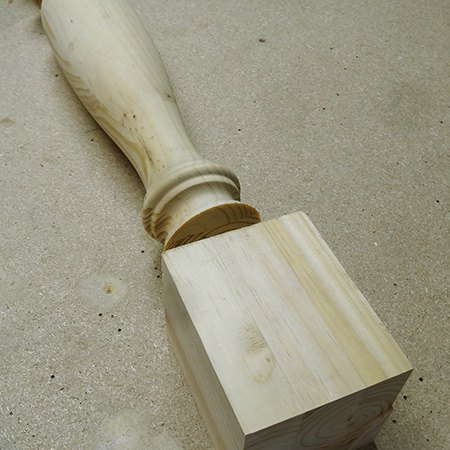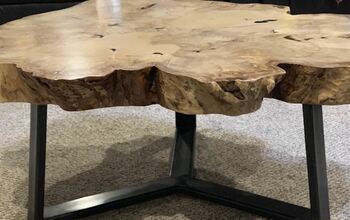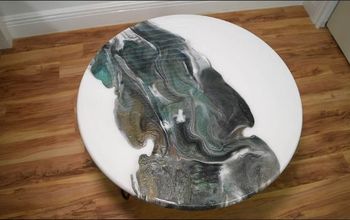40K Views
Easy Way to Make a Drop-leaf Table

by
Janice Anderssen
(IC: blogger)
I have received plenty of requests on how to make a drop-leaf table and most of the instructions you find are extremely complex. This DIY round drop-leaf table is easy enough for anyone to make. The table shown here is a design that quite easily be done as a DIY project using table legs that are available from a local woodturner. The leg that I have used for my table differs slightly in profile, but it is still sturdy enough to make the table.
YOU WILL NEED:
1. The foot of the original leg is removed. If you refer to my note above this then becomes the top of the leg for the table. However, you need to add a block here for stability and support. You can add a block of 100 x 100mm PAR pine, or trim some off the other end to add to the now top.
3. While waiting for glue to dry you can start cutting out the feet. Draw out the design for one foot, cut this out and then use as a template for the remaining three feet. The shape must form a perfect 90-degree angle down the side and along the bottom so that you don't have a wobbly table. Enlarge the design before to use as a template.
5. Now you can use a router and straight bit to cut a rebate 0.5mm deep and 16mm wide to the length (plus extra) to fit the feet into the base. This will ensure you have sturdy feet to support the weight of the table.
6. On the edge of each foot drill an 8mm hole to half the depth of your 8mm dowels. Hold the drill at an angle to that of the edge while you drill the holes, so that the holes are straight.
7. Working one foot at a time, insert dowel centres to mark the cut out slots. Mark each foot an corresponding slot so that you know which foot fits into which slot.
11. I cut the top out of a single sheet, but it is far easier to have 3 sections cut as per the cutting list at the top (a centre and two flaps). By doing this you will have perfectly straight joins between the three sections. and place these side-by-side as they will be fitted onto the leg - hammer a panel pin in the absolute middle of the centre section, place a length of chain onto this and use this to draw a circle around all three sections.
14. I used a roundover bit to finish off the edges of the table. This is part of the Tork Craft Router Bit set that I invested in. Set the depth so that the roller bearing will sit flush against the edge of the board. Use a scrap piece of board to ensure the depth is correct before you cut the edge of the top.
15. Place the three top sections face down on a flat surface and position the butt hinges. The barrel of the hinge should be placed to overlap onto the flap sections.
Assembling the table
With the support frame secure you can add the dowels. Note: To prevent the dowels from going straight through I wrapped a rubber band tightly around one end - not a great idea but it works like a dream!
Finishing the top
And there you have it... An easy drop-leaf table without all the technical jargon that few can understand, and that won't cost you a small fortune to make. It took me 2 days to make, and that includes waiting for paint to dry!
If I had one recommendation to make, I would probably make the centre wider and the flaps smaller. While the flaps can take a fair amount of weight it will only allow for one person dining in this area.
You will find full and detailed instructions here: http://www.home-dzine.co.za/diy-1/diy-circular-table.html
Enjoyed the project?

Want more details about this and other DIY projects? Check out my blog post!
Published June 3rd, 2015 3:00 PM
Comments
Join the conversation
2 of 14 comments
-
Beautiful table, great instructions too.
 Marie Alesi Caruana
on Jun 11, 2015
Marie Alesi Caruana
on Jun 11, 2015
-
-
What an amazing project! Impressive ~ Thanks for sharing!
 Joan Santa Cruz
on Jun 12, 2015
Joan Santa Cruz
on Jun 12, 2015
-









































Frequently asked questions
Have a question about this project?
I have a round 42" table. How can I make just one side into a drop-leaf? Can I just do it with a saw? I don't have any tools so I would have to buy them at the hardware store, so the cheaper the better for me. Thanks.